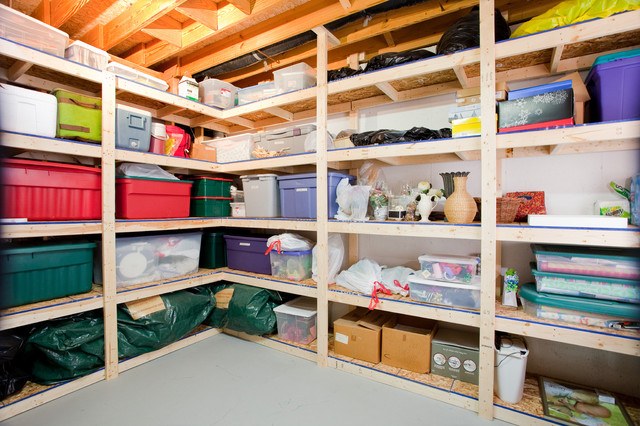
Most people can pile up a lot of stuff within a short period of time, so much so that the excess can make their homes seem cramped and closed-in with shocking speed. While smart and sensible storage practices can do a great deal to extend the storage spaces that are available to homeowners, there is a limit to their potential, meaning that there are cases when homeowners must be prepared to set aside more of their homes for storing their excess stuff.
The basement is one of the most suitable rooms for storing stuff. In main, this is because it is a spare room of sorts in most homes, meaning that it can be used for whatever the homeowner wants without sacrificing something important in the process, which is not something that can be said about either the bedroom, the bathroom, or the kitchen. Combined with the fact that storing stuff in the same space makes it that much easier to search through it in the future, this can mean excellent results when either part or the whole of the basement is set aside for the purpose of storing excess stuff.
Here are 10 practical basement storage tips:
1. De-clutter
First and foremost, the less stuff in the home, the less space that has to be set aside for the sake of storage. As a result, smart homeowners should check their basements for stuff that has not been used in more than a year’s time on a regular basis so that it can be either sold, donated, or tossed out. This way, they will have the storage space that they need to accommodate all of the stuff that they pick up in the course of their day-to-day living since they will also be making more room available at the same time.
2. Use Strong Shelving
Shelves are an excellent tool for creating more storage space. However, it is important to remember that shelves will be bearing a lot of weight, meaning that they need to be capable of standing up to that sort of pressure. For that matter, homeowners should refrain from storing their heaviest stuff on the higher shelves since that can increase the chance of a break as well as the seriousness of the consequences from a break.
3. Test Storage Solutions
Homeowners should feel free to experiment with innovative storage solutions. However, said individuals should also make sure to test them so that they can be sure that those solutions are really suitable for their needs and circumstances. Otherwise, they could end up wasting a lot of time and effort from having to change their basement layout again and again until they get it exactly right.
4. Put Similar Items in the Same Spaces
Similar items should be put in the same spaces. For example, cookware should be put on the same shelf, while clothes should be put somewhere else. This is important because putting similar items in the same spaces can make it easier to both find them and store them.
5. Remember Basement Conditions
Different items do better when stored under different conditions. As a result, homeowners should remember that basements tend to be colder and wetter than the rest of their homes, meaning that they should be careful with what they store in it unless they are willing to risk damage. With that said, there are potential protective measures such as plastic containers that can minimize the impact of environmental factors.
6. Use Unorthodox Storage Solutions
A willingness to use more unorthodox storage solutions can create more storage space than otherwise possible. For example, consider installing cabinets into a set of stairs. Similarly, use racks and hangers to create vertical storage space when shelves would be too cumbersome.
7. Use Labels
Baskets, boxes, and other containers are useful for creating more storage space while also sorting their contents into convenient categories. However, people who use a lot of containers can end up finding it difficult to distinguish one from the next, meaning that they should make sure to label them whenever possible. This way, they will know where to put their stuff with no more than a single glance.
8. Use Clear Containers
Sometimes, homeowners might have containers meant to hold more than one kind of item, meaning that labeling it will provide little usefulness. When this is the case, they should choose clear containers such as plastic totes so that they can see their contents, which serves the same purpose as labelled containers. Better still, being able to see into clear containers make it possible for people to gauge their contents with maximum ease, which is not something that can be said about their labelled counterparts.
9. Avoid Vulnerable Materials
Part of the process for handling basement conditions involves choosing storage solutions made out of materials that are either not vulnerable or at least less vulnerable to them. For example, wood is not the best choice for standing shelves in basements because the moisture can seep into them to cause permanent damage with sufficient exposure over a sufficient period of time. In contrast, standing shelves either made out of plastic or made with rubber bottoms will do just fine under basement conditions because those materials are under much less threat from moisture.
10. Remember Proper Protections
Likewise, homeowners should make sure to provide the proper protections for the stuff that they will be exposing to their basement conditions. For example, if they are going to store their tools out in the open, they should make sure to cover them in a layer of machine oil, which will provide them with the protective barrier against potential contaminants that they need. Similarly, they should make sure that valuable items are stored in high spaces rather than closer to the ground because floods are a surprisingly common problem for basements.


Comments
Loading…